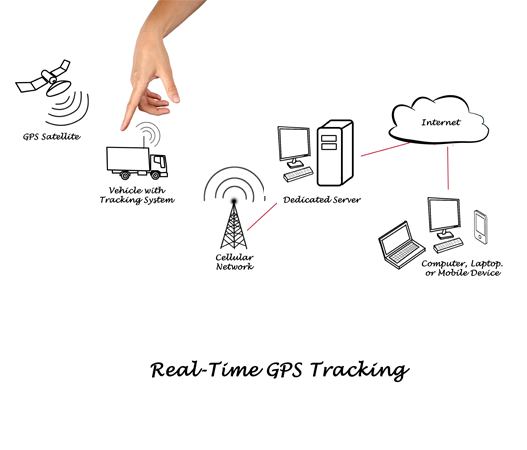Tag: real-time field service
Did you know that there are more than 8 million Uber users in the world? It is available in over 400 cities and almost 68 countries, and it is still growing.
Why do you think it is one of the most preferred taxi services?
Because it sends a car to your doorstep up to 2 times faster than a regular taxi service.
Similarly, Bizzy is another popular application that shows you where your friends have had dinner lately and also their recommendations.
What is common among such popular apps?
The Geolocation feature. Yes! It is the next big thing in a lot of industries, influencing not just consumer habits, but also the enterprise, more dramatically – in the field service industry.
It started off with cloud computing allowing employees of an enterprise to work mobile, from wherever they want, while still staying connected to office. Now, with geolocation, the transformation in the field service industry is more real and significant.
Considering how field service has always been an industry run on clipboards, spreadsheets and the like, cloud-based mobile solutions have indeed brought a substantial change in work efficiency. Earlier, technicians only had a little more than a phone, to connect with their main office. Now, with the advent of smartphones with built-in GPS capabilities, the field service industry can leverage the power of real-time geolocation services.
Here are some ways in which geolocation is revolutionizing the field service industry:
- Real-time tracking of location – This is one of the more obvious benefits of the geolocation feature. It allows the dispatchers to say exactly where their techs are, analyze their transit to see if they are stuck on the road, track the status of their task, plan their breaks etc. On the whole, it allows dispatchers to assign and reassign jobs according to the technician’s schedule.

- Performance management – As an extension of the above advantage, dispatchers get to know how much work and how well, their technicians are performing. They also get to see how many breaks they take, how long they break, whether they make early starts or end shifts early etc. This way they get to analyze and manage the performances of their field technicians effectively.
- Effective labour billing – Accurate tracking of worker timings leads to an automatic log of arrival and departure times, allowing for effective labour billing.
- Better communication – Geolocation put together with cloud services can benefit the customer too in huge ways. For example, a text or an alert can be automatically sent to the customer, when the technician is reaching the location or is exactly 15 minutes away from the location of service. Better scheduling leads to better insights for the dispatcher about creating more realistic timelines.
- Better collaboration – When on duty, if a service technician finds himself short of essential parts or tools, geolocation helps to track other technicians who may be nearby, from whom the shortage can be compensated with. Their inventories can be synced too so that it would be easy to identify who has the required tools and connect with them on the fly. This way, the job can be completed on the same day, rather than the customer having to reschedule the entire job. More like smart work!
- Efficient driving – Geolocation helps to analyze driving routes and give updates to technicians about traffic and weather issues.
Geolocation thus helps in incorporating more transparency and accountability into the business, leading to faster service delivery and in turn an improved bottom line.
What other benefits do you think can be added to this list? Let us know in the comments below.
Stay up to date on what's new

Featured Blogs
Stay up to date on
what's new



Talk To Our Experts
We now live in the midst of what is called the “on-demand” economy, which always gets us pizzas and taxis on time, right at our doorsteps. The same phenomenon also calls for field services to be “on-demand” and “real-time” as well, making it necessary for field service companies to embrace mobility and provide faster turnaround times than before.
As a matter of fact, mobility is something that is slowly becoming mainstream in most business enterprises and industries. Mobile devices are no longer seen as a distraction, instead, they are embraced for their potential to provide better customer satisfaction through faster service delivery while in the field.
However, a good number of field service companies are still hesitant in adopting mobile solutions, due to a number of reasons like lack of in-house IT expertise or a low ROI. Moreover, change, as we know is not always welcome. According to the Aberdeen group, about 48% of field service organizations are resistant to changes.
If you are one of those companies, that still haven’t gone mobile yet, it is high time you did something about those barriers and embraced mobility. Here’s why:
Immediate problem-solving
Customers these days, want things installed, fixed or want their problem to be solved immediately. They don’t want to have to wait days and weeks for their issue to be addressed.
For field service agents, access to instruction manuals, troubleshooting guides, and real-time data availability lets them meet ever decreasing SLA times. These help in diagnosing and fixing a problem right the first time. This can be especially useful for trainees or new joinees.
“69% of best-in-class organizations make use of mobile devices to equip their field service team with access to remote experts and their peers.”
Improved customer service
In today’s business environment, it goes without saying how critical customer service is. It is the tools that businesses invest in, that help in improving services to customers.
And that is why going mobile is the right thing to do, to encourage technicians to perform better and differentiate themselves from their competition.
Customers these days expect great customer service on top of completing service calls and fixes on time. Technicians are often seen as customer service agents, and not just engineers. For example, in the event of a customer not being able to be on-site while a technician is fixing a broken machine, mobility can be used to inform the customer on fulfillment of the Service Level Agreement (SLA). Such real-time updates to service delivery provide greater transparency as well.
Apart from these, a well implemented mobile strategy can be beneficial for the entire organization and not just the field service technicians. A proper mobile strategy can be formulated with the IT department as well, and have processes aligned to it so that the overall functioning gets streamlined.
Moreover, mobility leads to not only happier customers but also happier employees or technicians, their work becomes much easier. If you haven’t gone mobile yet, now is the time to switch from paper-based systems, and give a chance for your technicians to deliver better performance.
Source: Field Service News
Stay up to date on what's new

Featured Blogs
Stay up to date on
what's new























































